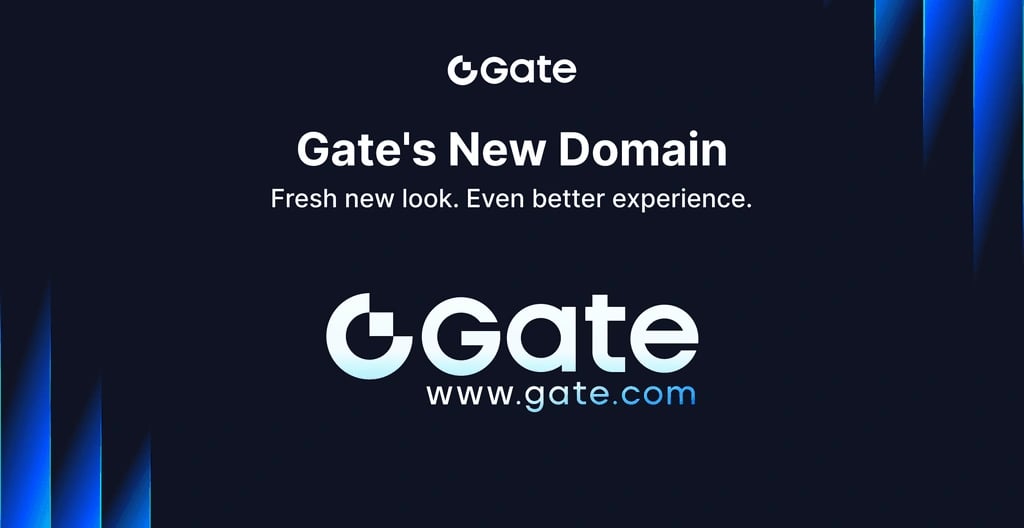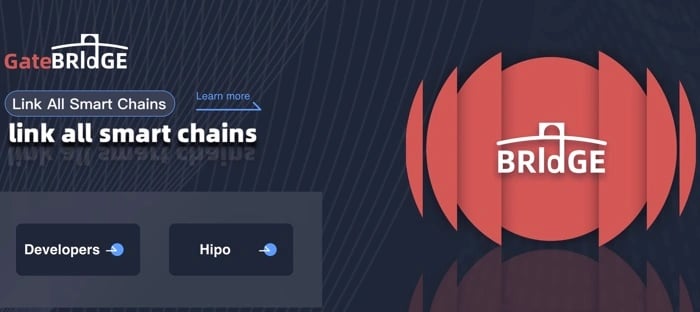订阅 wiki
Share wiki
Bookmark
GateChain
GateChain
GateChain 是一个专注于资产安全的公共 区块链。链上安全账户和延迟恢复功能旨在提供 区块链 资产安全,即使在 私钥 被黑客攻击后也是如此。
概述
GateChain 由 Wassilios Lytras、Patrick Allemann 和 Thomas Kofler 于 2016 年 4 月 30 日共同创立。[9] GateChain 是 Gate.io 开发并于 2018 年推出的下一代区块链[11],旨在发展和扩展 Gate.io 生态系统[10]。它是 林汉 创立的 Gate.io 的公链。凭借其独特的 Vault 账户技术和支持交易模型设计,GateChain 实施了一种安全的清算机制,以解决丢失资产和私钥被盗的问题。
它还支持 去中心化交易 和转移链等核心应用。与传统的区块链(如 比特币 和 以太坊)相比,GateChain 专注于资产链的安全性,并创造性地提出了许多新颖的概念,如标准账户、Vault 操作、Retro 账户、过度拥挤、日历小时、地址类型、交易类型等。[1][2]
GateChain 向用户提供 Vault 账户服务,该服务支持在私钥丢失或被盗期间释放数字资产,而无需担心。只要设置数字资产分配比例和释放时间,用户的数字资产将相应地转移到其指定的受益人。这种资产处理方法也可用于其他场景,如定期资金授予,即在预定时间发送一定数量的数字资产。[18]
GateChain 升级
2024 年 8 月,GateChain 发布了 v1.1.6 版本,引入了一项重要的协议更新,该更新实施了一种新的交易费用结构,该结构以以太坊的 EIP-1559 为模型。所有节点都需要在 2024 年 8 月 26 日之前升级。
修改后的费用机制将交易成本分为两个部分:基本费用,该费用随区块使用情况动态调整,并永久从流通中移除(销毁);以及小费,该小费作为参与共识的激励奖励给 验证者 和委托者。这种结构旨在使用户的费用更具可预测性,并为 GT 代币供应引入通货紧缩因素。
- 升级到 以太坊虚拟机 (EVM) 版本。
- 将最低 gas 价格从 5 提高到 10 NANOGT。
- 支持 EIP-2718,启用多种 EVM 交易类型。
- 兼容 EIP-1559,支持动态费用调整和基本费用销毁。
- 升级了 RPC 接口和通用流程优化。
- 增强了账户管理工具和各种错误修复。
这些更新旨在提高网络效率,支持更广泛的 EVM 兼容性,并将 GateChain 的交易模型与更现代的标准对齐。[19]
域名升级

2025 年 5 月,Gate 正式过渡到 Gate.com 域名,并引入了重新设计的徽标,作为更广泛的品牌和战略更新的一部分。这一变化反映了该平台统一其全球身份并加强用户信任的意图,因为它扩大了其国际影响力。
域名和徽标更新恰逢 Gate 成立 12 周年,并符合其发展成为“下一代加密货币交易所”的目标。品牌重塑强调了从行业参与到创新的转变,将简化的视觉形象与更广泛的组织调整相结合。Gate 及其区域分支机构,包括 Gate Japan、Gate Dubai 和 Gate Europe,现在都在统一品牌下运营。[20]
服务
GateChain 包括 GateChain 主网、GateChain DEX、GT 代币和钱包等元素。
GateChain 主网
其第一个版本的 主网 于 2020 年推出。它确保了区块链上数字资产的安全高效管理和转移。
GateChain DEX
GateChain DEX 是一个基于 GateChain 的 去中心化交易所。用户可以控制其账户的私钥,从而可以自由交易。GateChain DEX 使用私有的加密钱包或硬件钱包来保护用户的资产。
GateChain 代币 (GT)
GateChain 代币 是 GateChain 主网的原生货币。它用于支付 GateChain 网络上的转账费用。[3]
GateChain 钱包
- 测试网阶段 - GateChain 提供了适用于 Windows 和 Mac OS 的桌面钱包。
- 主网 阶段 - GateChain 提供了命令行钱包、适用于 Android 和 iOS 的移动钱包、Web 钱包、多重签名钱包和硬件钱包。[13]
资产管理
为了满足日常支付的效率需求和资产存储的安全需求,GateChain 提供了:
- 标准账户 – 用于存储一小部分资产以供日常使用。它允许即时支付,并且交易是不可逆转的。它不允许恢复丢失的私钥,类似于 比特币 地址的功能。
- Vault 账户 – 用于存储大部分资产,这些资产不需要立即访问。它可以设置转账延迟期。它允许可撤销的交易和私钥恢复。
例如,交易在付款后确认并且是可逆的。在最坏的情况下,当标准账户的私钥丢失或被盗时,用户的损失仅限于一小部分。风险仍然在控制之下。当标准账户中的资产不足时,用户可以从 Vault 账户转移更多资产。转账将在 2 天(例如)的延迟后收到。如果在延迟期间确定发生盗窃,用户可以简单地发起“撤销”请求。被盗交易将被撤销并移至“重试账户”。[17]
项目
以下提到的所有项目都是在 GateChain 上构建的。
- DeFi:TripleFi、Emiswap、DRx、TrustFi。
- NFT 市场:Vefi NFT 市场、Flat Pyramid。
- 基础设施:Xhashtag、BitKeep、Seor、MultiChain、Legion Network、TP Pocket、Nabox、XP.Network、Dotoracle。
- Metaverse:MetaMirror、LasMeta。
- SocialFi:EarnTV、Eggheads。
- 其他区块链:GBC.AI[14]
GateChain 的特点
GateChain 的主要特点如下:
- PoS:GateChain 使用 权益证明 (PoS) 共识机制 来维护网络健康。
- 资产发行:用户可以使用 GateChain 发行自己的代币。
- 多重签名:一个账户可以由多个人共享。这适用于企业和家庭使用。
- 资产安全存储:Vault 账户系统和清算机制确保 100% 安全,免受资产盗窃、私钥丢失和异常交易的影响。
- EVM 兼容性:GateChain 与 以太坊 虚拟机 (EVM) 兼容。这确保了开发人员可以轻松地将其以太坊 dApp 移植到 GateChain 上。此外,GateChain 用户还支持以太坊和 GateChain 资产的账户。
- 跨链互操作性:这种互操作性扩展了数字资产的范围和效用,从而实现了跨不同区块链网络的高效资产转移和交互。[12]
生态系统
Hipo DeFi
Hipo DeFi 是满足所有 DeFi 需求的一站式商店。它是一个收集每个 DeFi 项目实时数据的平台,允许用户比较汇率、收益、贷款和利率。用户可以通过 Hipo Defi 的 UI 直接发现新的投资机会并访问它们,无需额外费用。[16]
GateBridge

GateBridge 是基于 EVM 的最流行的区块链之间的资产桥。它支持快速安全的资产转移和首创机制
- “跨链 流动性挖矿”。
挖矿
流动性提供者 (LP) 可以获得交易费用分配,并且质押 LP 代币可以为用户赚取更多奖励。
Magic Box
NFT Magic Box 于 2021 年推出,是一个建立在 GateChain 之上的 NFT 市场。
特点
其核心特点是:
- 无铸币费:在 Magic Box 上 铸造 NFT 不收取任何费用。这确保了艺术家可以专注于创作而不是其他因素。
- 低费用:建立在 GateChain 之上使得该平台非常实惠。
- 高质量作品:NFT Magic Box 已与 Bored Ape Yacht Club (BAYC) 和 NBA 传奇人物艾伦·艾弗森等合作。
- 艺术家优先:Magic Box 已经铸造了超过 300,000 个 NFT,并为寻求资金的有前途的艺术家提供 INO(首次 NFT 发行)。[15]
发现错误了吗?
